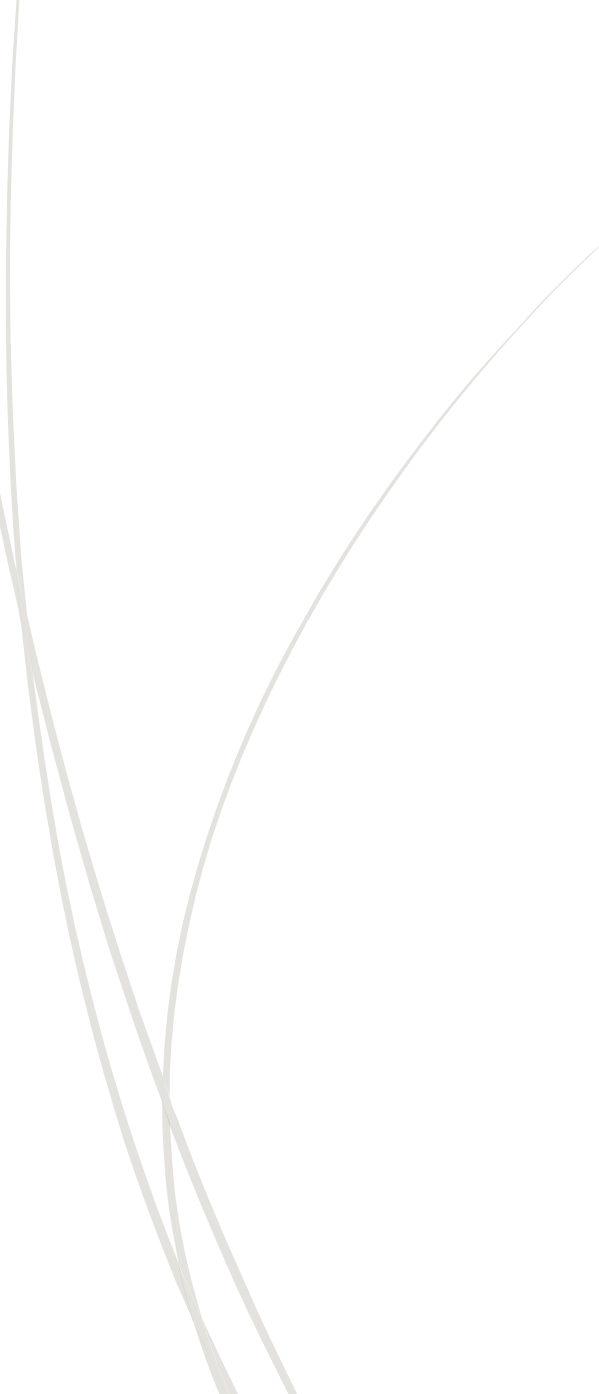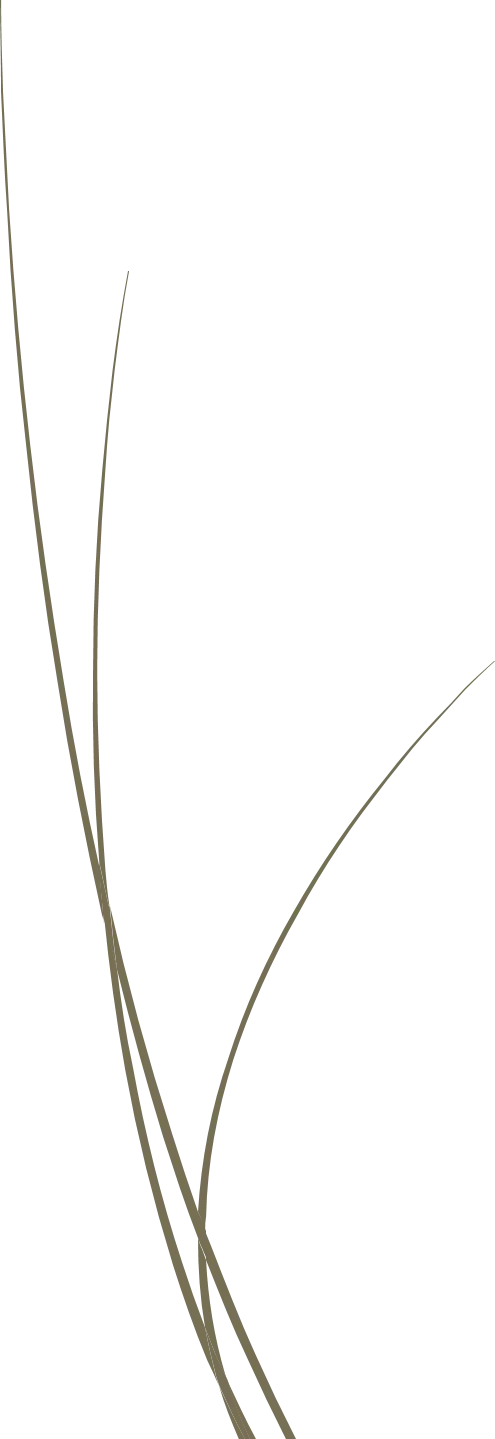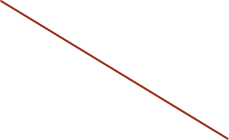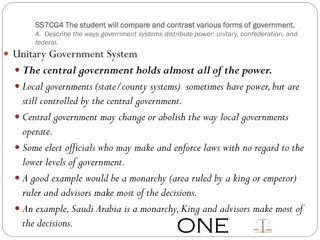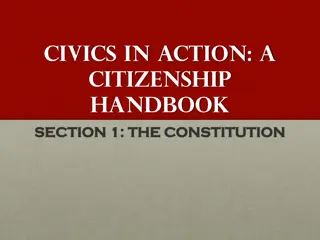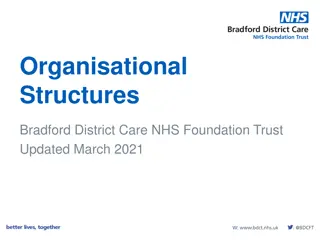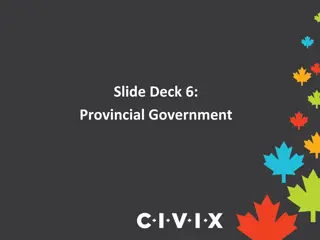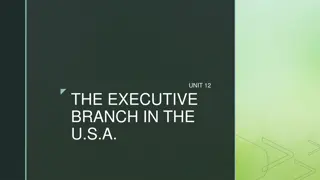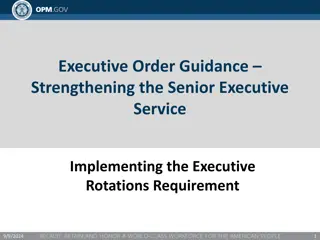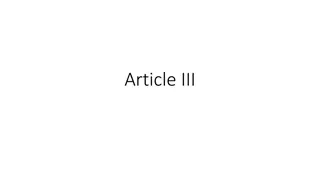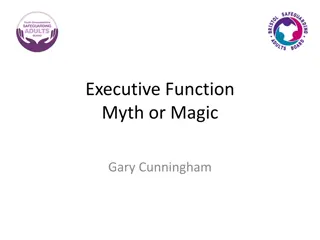Different Types of Executive in Government Systems
The executive branch of government is responsible for implementing and enforcing laws created by the legislative branch. There are different types of executives, including nominal/real, single/plural, and hereditary/elected. The distinction between these types is crucial in defining the roles and responsibilities within the government structure.
Download Presentation

Please find below an Image/Link to download the presentation.
The content on the website is provided AS IS for your information and personal use only. It may not be sold, licensed, or shared on other websites without obtaining consent from the author. Download presentation by click this link. If you encounter any issues during the download, it is possible that the publisher has removed the file from their server.
E N D
Presentation Transcript
WINGS OF GOVERNMENTI EXECUTIVE PRESIDENT VICE-PRECIDENT PRIME MINISTER COUNCIL OF MINISTER ATTORNEY GENERAL LEGISLATURE PARLIAMENT RAJYA SABHA LOK SABHA JUDICIARY SUPREME COURT CHIEF JUSTICE OTHRE COURTS
MEANING OF THE TERM EXECUTIVE The second important organ of the government is executive What is Executive? THE BRANCH OF FEDERAL AND STATE GOVERNMENT THAT IS BROADLY RESPONSIBLE FOR IMPLEMENTING,SUPPORTING AND ENFORCING THE LAWS MADE BY THE LEGISLATIVE BRANCH AND INTERPRETED BY THE JUDICIAL BRANCH.
KINDS OR TYPES OF EXECUTIVE 1. Nominal/Titular and Real/Actual Executives: The difference between the nominal/titular and real executives is made only in a parliamentary system of government. In it, the head of state, the President or the Monarch, is the nominal executive and the Council of Ministers headed by the Prime Minister is the real executive. All the powers are legally the powers of the nominal executive but in practice these are exercised by the real executive. The nominal executive is not responsible for its actions as these are performed in its name by the real executive. The real executive is responsible for all the actions of the nominal executive. The nominal executive is the ceremonial and dignified part of the executive, whereas the real executive is its powerful part.
(2) Single and Plural types of Executives: Single executive means that all executive powers are vested in one Head of the State, e.g., the President of America exercises all executive powers. In Switzerland, the executive power is not in the hands of only one individual, but in the hands of a Council of seven members. The Chairman of this Council has no additional powers. Thus all the seven members are equally responsible for the administration in that country. This type of Swiss executive is called Plural Executive.
3. Hereditary and Elected Executives: In hereditary executive, the executive comes into office through succession or inheritance. When a king is the Head of the State and when after his death his son or, in case of his being issueless, some of his near relative occupies the throne, the system is called hereditary executive. This type of executive is functioning in England, Norway, Sweden, Denmark, Belgium, Holland and Japan.
POLITICAL AND PERMANENT ( OR NON- POLITICAL) EXECUTIVE Political executive - One that is elected by the people for a specific period,is called the political executive. They makes law and policies. They are elected by the people and can be changed in the next election. Permanent executive - They are appointed by the government on a long term basis. They are in charge of the 'executive ' of the policies of the government. They are parmanent and remain in the office even when the ruling party changes.
4. Parliamentary and Presidential Executives: The distinction between the parliamentary and presidential executives is made on the basis of relationship between the legislature and executive.
In Parliamentary Executive there is: (i) A close relationship between legislature and executive and members of the executive are also members of the legislature, (ii) The members of political executive is individually and collectively responsible before the legislature, (iii) The tenure of the political executive is not fixed as it can be at any time removed by the legislature, and (iv) The legislative can be dissolved by the executive.
In a Presidential Executive, there is: (i) Separation of powers between the executive and the legislature; (ii) The membership of the two organs is incompatible i.e. member of one cannot be a member of the other; (iii) The executive is not responsible to the legislature; and (iv) Neither can dissolve nor remove the other. The parliamentary executives are functioning in India, U.K., Canada, New Zealand, Australia and several other states.
Methods of choosing the chief executive or modes of constituting the executive 1.Hereditary 2.Direct popular election a)INDIRECT ELECTION BY ELECTORAL COLLEGE b)INDIRECT ELECTION BY THE LEGISLATURE c) NOMINATION
RISE OR INCREASE IN THE POWERS OF EXECUTIVE TIMES LEGISLATIVE OVER BURDEN COMPLEX NATURE OF PROBLEMS PLANNING POLITICAL PARTIES DELEGETED LEGISLATION EXPERTISE OF EXECUTIVE TIME FACTOR NEARNESS TO PEOPLE
POWERS AND FUNCTIONS OF THE EXECUTIVE ADMINISTRATIVE FUCTION/ENFORCEMENT OF LAW AND MAINTENANCE OF ORDER DIPLOMATIC FUNCTIONS (EXTERNAL ADMINISTRATION OR CONDUCTING THE FOREIGN RELATION) MILITARY FUNCTION (PROTECTING TERRITORIAL INTEGRITY) LEGISLATIVE FUNCTIONS FINANCIAL FUNCTIONS JUDICIAL FUNCTIONS MISCELLANEOUS FUNCTIONS
1) Administrative: In every country the Head of the State and the Council of Ministers are responsible for the maintenance of law and order and for the running of the administration. The Head of the State, on the recommendation of the Council of Ministers, makes many important political appointments. The administrators are generally recruited on the basis of competitive examinations. They are promoted, demoted and dismissed under the Civil Service Rules.
2) Legislative: Generally law making is the responsibility of the legislature, but in every country the executive has an important role to play in the making of the laws. The executive prepares bills for this purpose and introduces them in the legislature. There is a Parliamentary Government in England, India, Japan, Sweden, Norway, France, Italy and West Germany. The leader of the majority party becomes the Prime Minister. He has influence on both the organs of the government i.e., Legislature and Executive. The ministers are also important members of the Parliament. Therefore, they too have sufficient influence on the legislature or on the Parliament. In England, India and other Parliamentary countries, the Parliament spends much of its time on the discussion of the bills. (3) The executive has not only this much role to play in the framing of the laws, but more than that. That laws passed by the legislature can be vetoed by the President. This is the practice in India and the U.S.A. Besides, the President has the right to issue
4) Military Functions: In almost all the countries, constitutionally the President or the Head of the State has many military powers. He is the Supreme Commander of the Armed Forces and has the power to promote, demote and dismiss high military officers. He himself, or with the consent of the Parliament, can declare war or peace.
5) Foreign Relations: The executive establishes political relations with foreign countries. Our government has established political or commercial relations with almost all big countries. The President appoints diplomatic representatives in other countries and receives those of foreign countries.
6) Financial Functions: Though the legislature controls the national finance, yet the executive prepares the budget and tries to get it passed by the legislature.
EXECUTIVE IN INDIA THE EXECUTIVE PERFORMS THE DUTIES OF POLICY MAKING AND THE IMPLEMENTATION OF THE POLICIES. Executive - Indian Government consists of the President of India, the Council of Ministers, the Vice-President, the Union Ministries and the Independent Executive Agencies. In the Executive - Indian Government, the President of the nation is the head of the state. The Executive - Indian Government executes its powers through the President, the main guardian of the Constitution of the Republic and the Supreme Commander of the Armed Forces.


